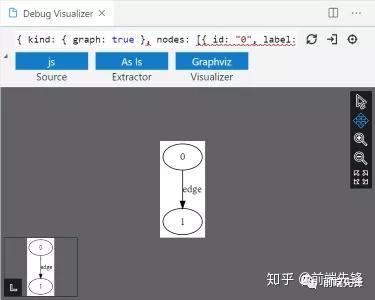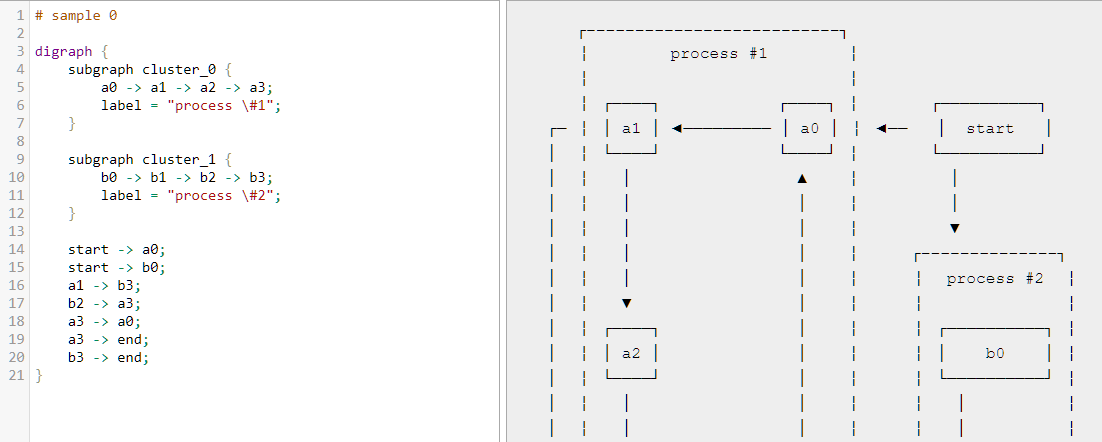
REACT GRAPHVIZ CODE
This is react’s approach to easily code split your code. You can achieve this with the inbuilt React.Lazy, React.Suspense and dynamic imports. You should again defer loading non critical components. Now with the concept of lazy loading images out of the way, we can extend it to other components, again, why do some computations and animations when the element hasn’t appeared in the view. Unfortunately the non-react-based might change the DOM directly so you may want to avoid them.Īctually, you can create an image component, and lazy load it using React.lazy() and React.suspense().
REACT GRAPHVIZ HOW TO
I will list them here but not go into details of how to use them, as they all have a similar concept of what we have discussed here. There are other libraries out there that can help with this in the JavaScript ecosystem, and some specific to react. We will first attach an empty src to our image, and when it is in view we will attach our src, the browser will then fetch the src, and it will be a win win for all.
REACT GRAPHVIZ FREE
This way, sites no longer need to do anything on the main thread to watch for this kind of element intersection, and the browser is free to optimize the management of intersections as it sees fit. The Intersection Observer API lets code register a callback function that is executed whenever an element they wish to monitor enters or exits another element (or the viewport), or when the amount by which the two intersect changes by a requested amount. The Intersection Observer API provides a way to asynchronously observe changes in the intersection of a target element with an ancestor element or with a top-level document’s viewport. Mozilla web documentation describes the intersection observer API as: Intersection Observer APIĪnother way to do this is to use the intersection observer API. Unfortunately, its not supported by all browsers as a result, its recommended to add polypill. This works amazingly, it will load and render the image as it comes into view and not treat it as a critical resources. Most of those images are off-screen (non-critical), requiring user interaction (an example being scroll) in order to view them.Īll we have to do is to add loading=“lazy” to the image as such Very often, webpages contain many images that contribute to data-usage and how fast a page can load. It’s a way to shorten the length of the critical rendering path, which translates into reduced page load times. Lazy loading is a strategy to identify resources as non-blocking (non-critical) and load these only when needed. You can then load the images in the background or when they come into the viewport. My go-to is to defer all images as long as the page can be fine without the image, I say, let’s defer the loading of the image till other components are loaded. Lastly, if we take a step back, you may realize, sometimes, even the images in the view port shouldn’t block, nor prevent the site from loading other content, such as the CSS, and some core JavaScript. Let's consider another case where the image isn’t available in the viewport, again, these images shouldn’t be given as many priorities as the images in the viewport. Why then should all the images be given the same priority when requesting the resource from the server? Take for example a slide show, the most important image is the one currently available. The problem is, not all images are actually needed. Images are just resource intensive, usually, they make a huge portion go the resources that is being served too a page.


And thankfully React has some awesome API and pointers for us to optimize just that. The goal here is to give priority to components and elements that are critical to the UX at a particular time.

How dare the footer, compete for resources with the header when the page is loaded, chances are if you look at your website stats, or usage heat map, there aren’t as many hits to the footer anyway. The question is: If we fundamentally are aware that the design will not be visible on the screen at the same time, why then do we bother the browser to render it all at once? Can’t we find a nice way of telling the browser to render only the upcoming component. So we wear our goggles and start implementing the designs pixel by pixel.

Usually, when I look at Figma and XD designs they look longer than its wide, oh I mean they are mostly portrait.īut that’s fine, we all do not expect the whole design to appear on the screen at the same time, we understand that, part of the design will be on the screen and part of the design will be available as the user scrolls.Īwesome.


 0 kommentar(er)
0 kommentar(er)
